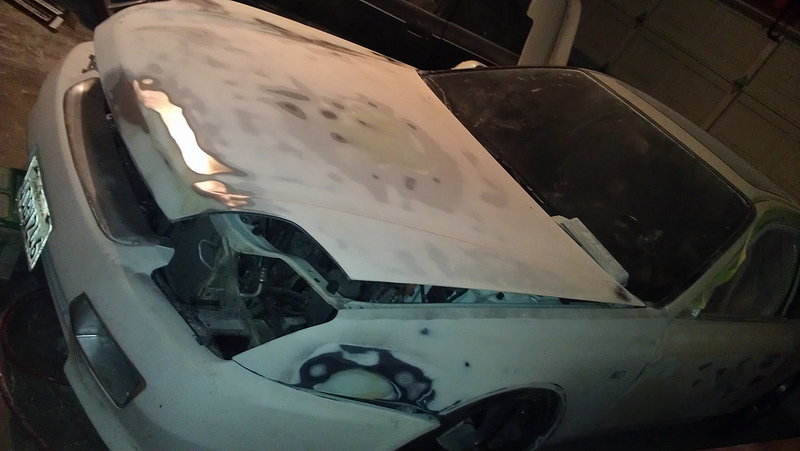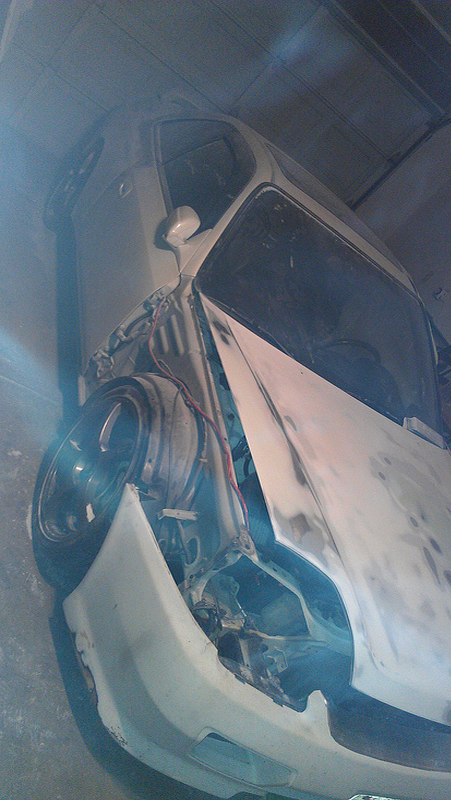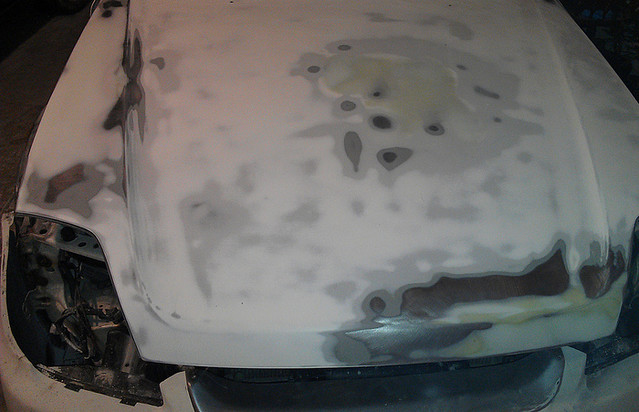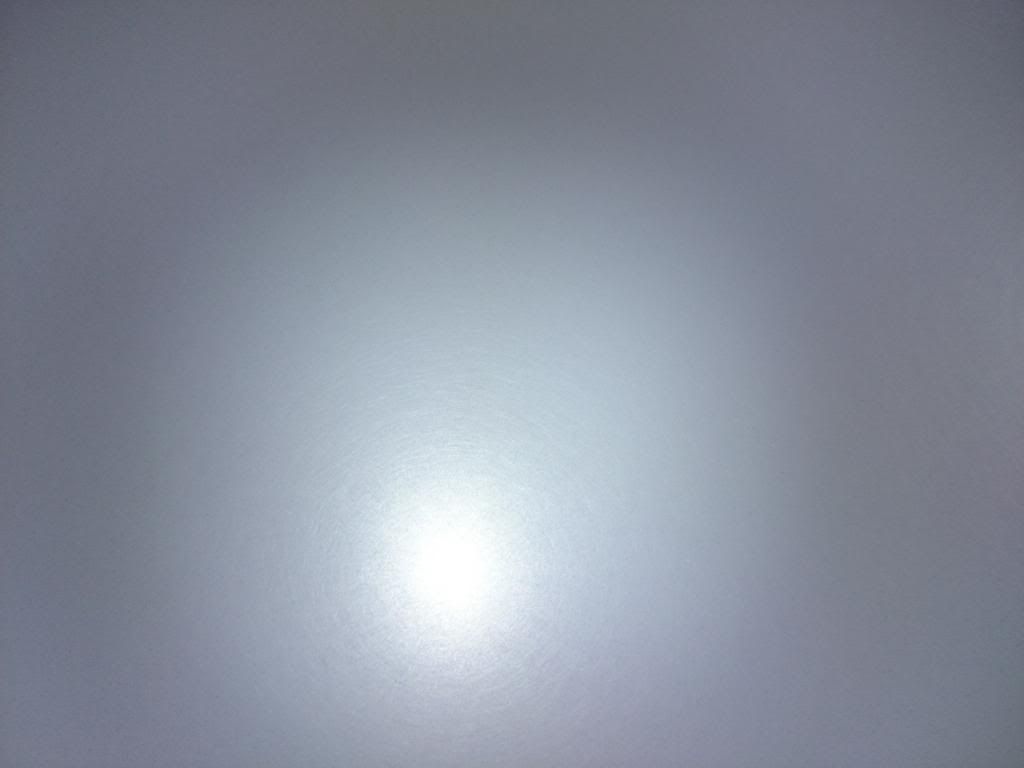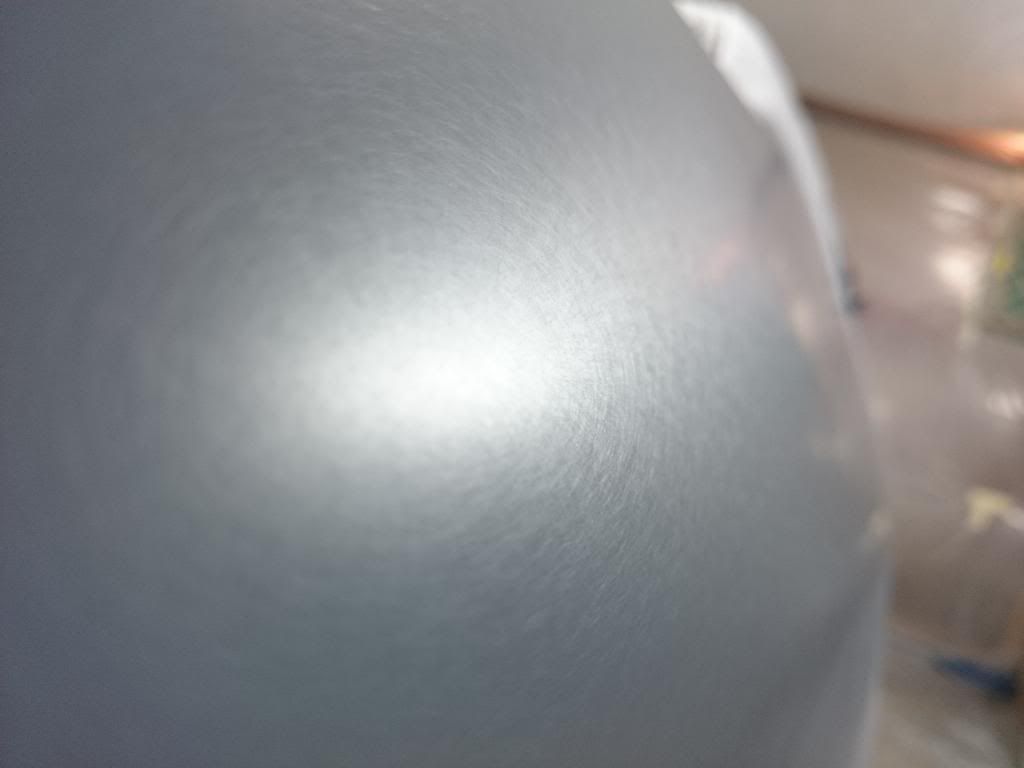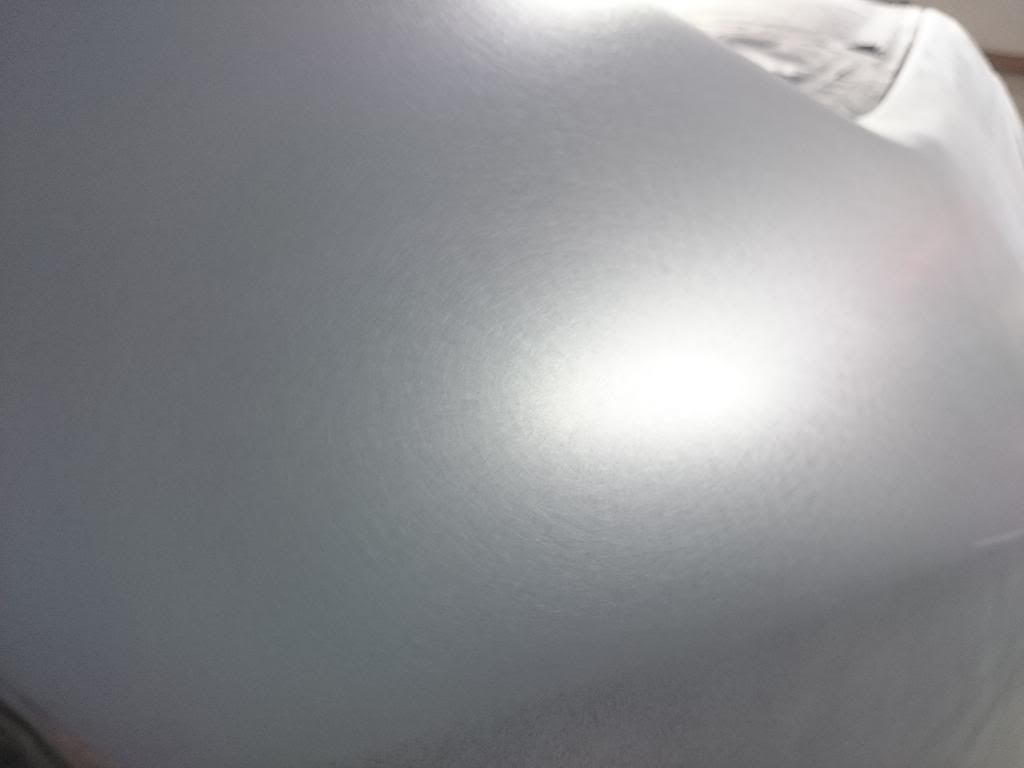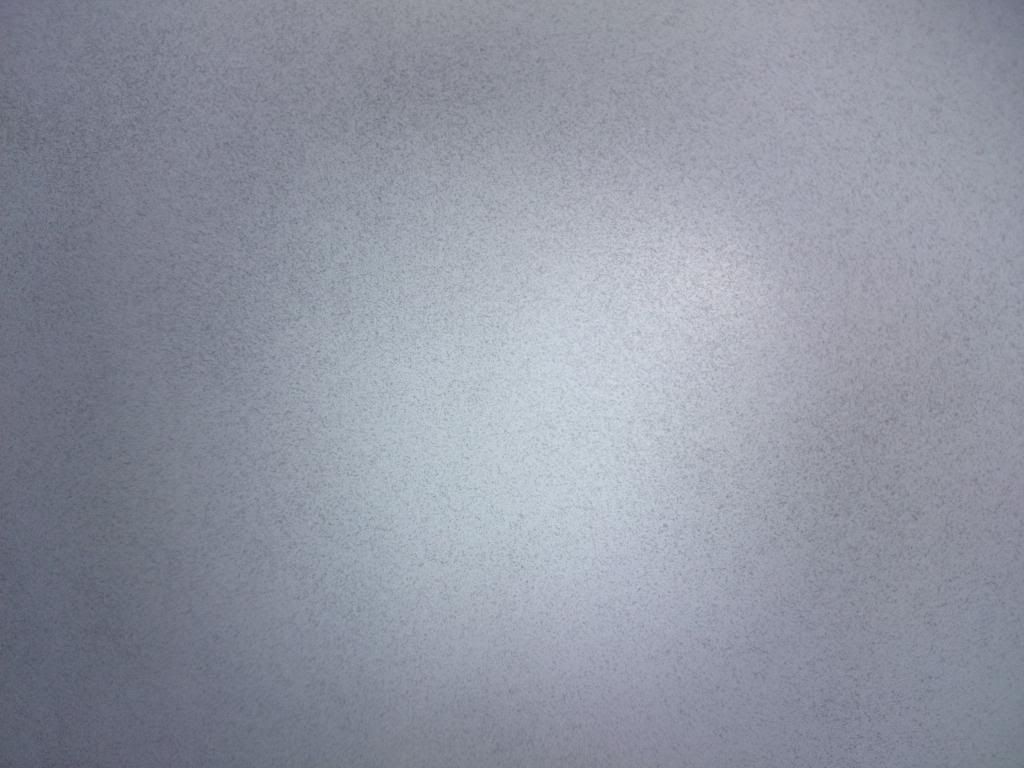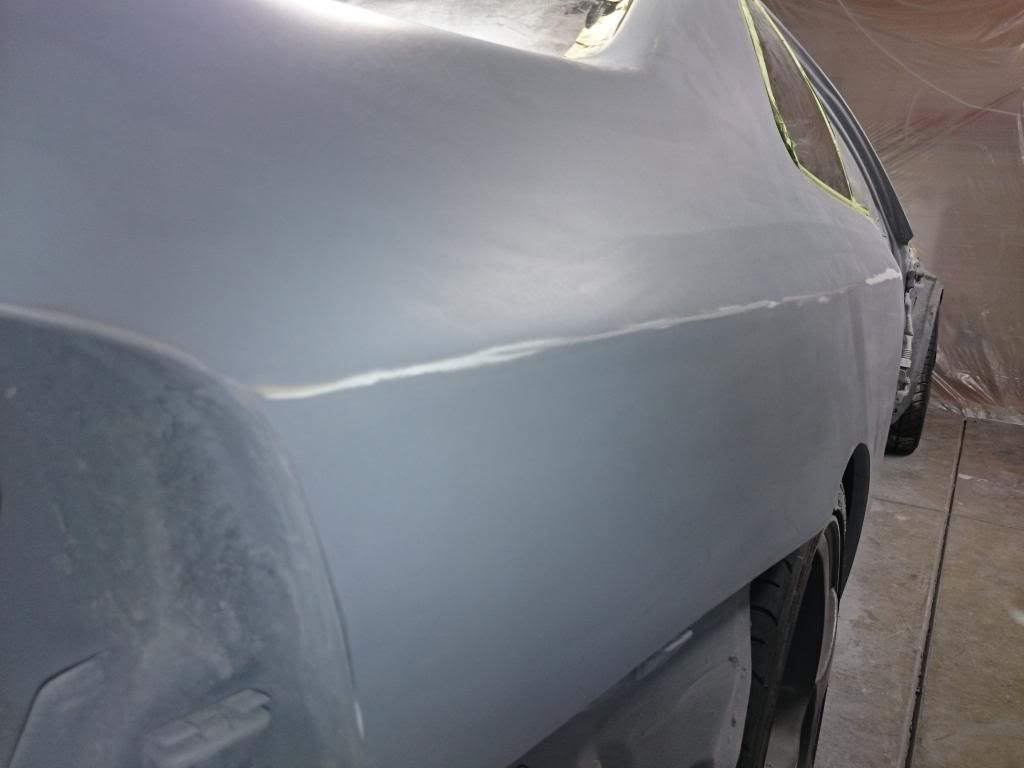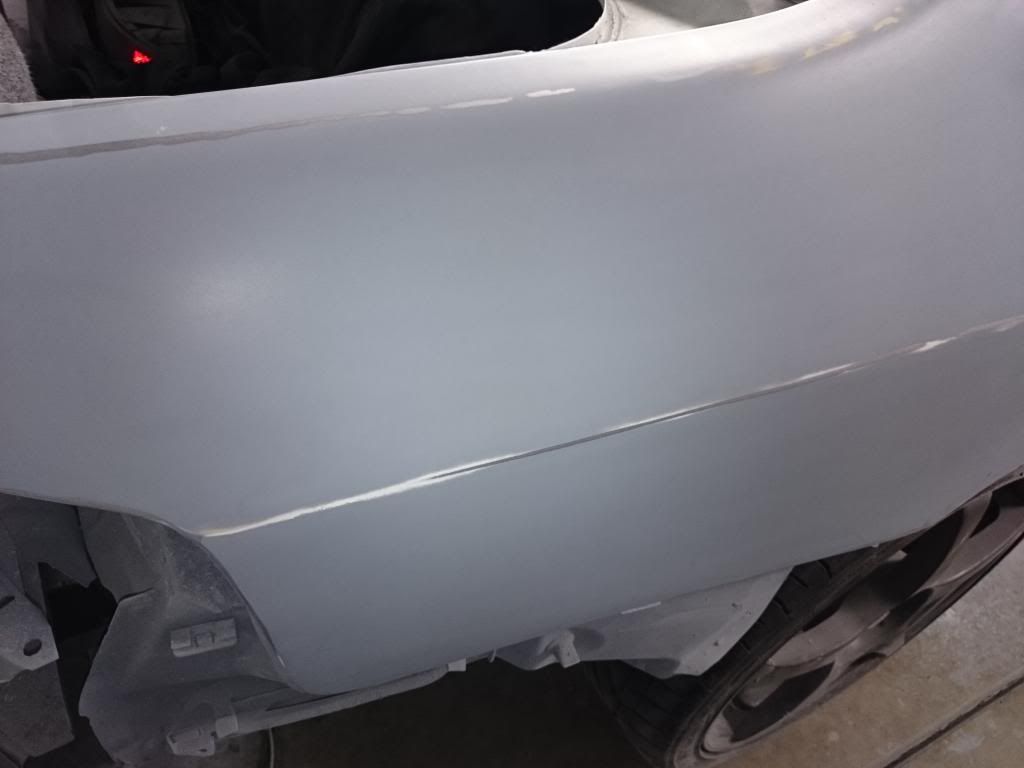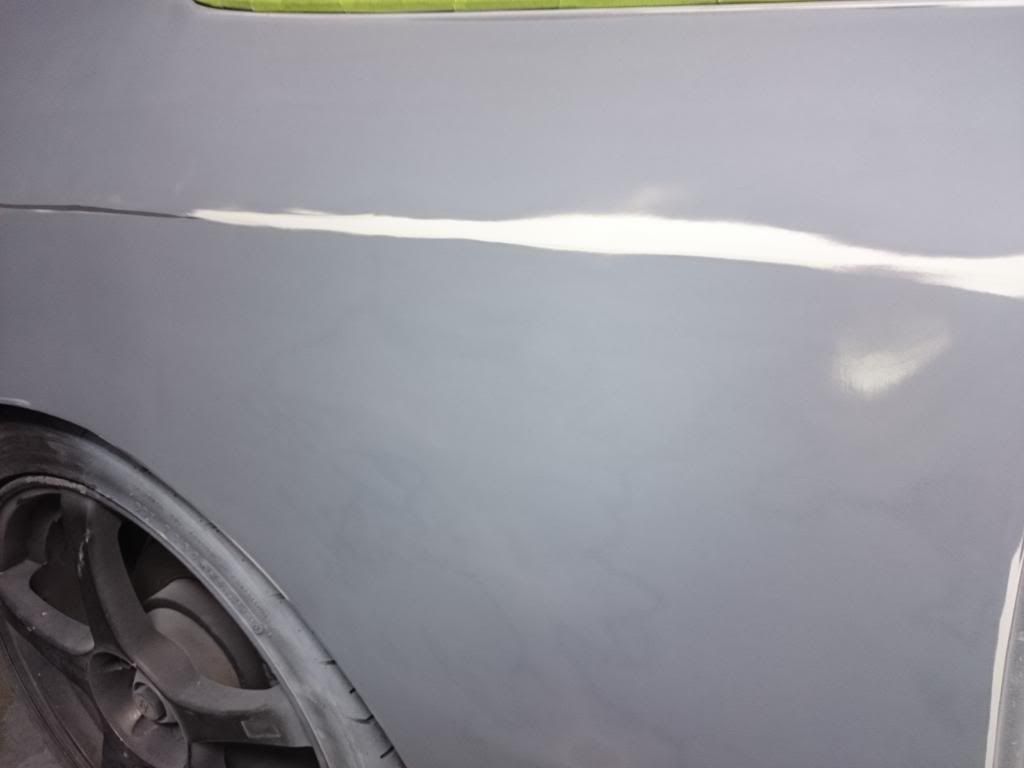B
BB6
Hey guys, bugging again with some more questions  layful: anyways heres some pictures and I need some advice. The car was guide coated then da the entire car with 180. I finally learned how to adjust my gun properly, before I had the entire car 2k'd, sealed, and base coat. Stopped at base coat because it cracked all the way to sealer. I decided to pretty much remove all the layers and start all over now that I feel confident after messing up 4x trying to get this painted. Never had any training or anyone help me other than these forums so I know I made alot of mistakes, practice makes perfect right?
layful: anyways heres some pictures and I need some advice. The car was guide coated then da the entire car with 180. I finally learned how to adjust my gun properly, before I had the entire car 2k'd, sealed, and base coat. Stopped at base coat because it cracked all the way to sealer. I decided to pretty much remove all the layers and start all over now that I feel confident after messing up 4x trying to get this painted. Never had any training or anyone help me other than these forums so I know I made alot of mistakes, practice makes perfect right?  . Anyways I guide coated, da with 180, guide coated it again, hand blocked entire car with 320. Removed almost all scratches and no dents showing and feel pretty happy with the body work. Wanted to make sure my body work was "perfect" before I continue with the next step. So this is where I am at, oh and for some reason attachments aren't working for me so heres a link. If someone can post these for me I'd appreciate it.
. Anyways I guide coated, da with 180, guide coated it again, hand blocked entire car with 320. Removed almost all scratches and no dents showing and feel pretty happy with the body work. Wanted to make sure my body work was "perfect" before I continue with the next step. So this is where I am at, oh and for some reason attachments aren't working for me so heres a link. If someone can post these for me I'd appreciate it.
https://www.dropbox.com/sh/chog3vh8l7g6x8x/AADCUmsgKw98H8YkzCnIMlbZa
Now I know theres a bit of guide coat left but its where my flat block couldn't get to so tomorrow I will use my round block, filler showing and metal showing on edges. Now heres what I am thinking. I am going to go over this with my da and 320 tomorrow before applying next product. So what would be best
1. Spray 1? 2? coats of 2k, da with 400, then epoxy seal(reduced 50%) entire panel or just break throughs? (I know I will break through primer, edges or something), base, clear.
or
2. Guide coat again, da 400, epoxy seal entire panel(reduced 25%), base, clear
or
3. What would you do
would either way work? would one way be better? what do you recommend. Thanks alot!
https://www.dropbox.com/sh/chog3vh8l7g6x8x/AADCUmsgKw98H8YkzCnIMlbZa
Now I know theres a bit of guide coat left but its where my flat block couldn't get to so tomorrow I will use my round block, filler showing and metal showing on edges. Now heres what I am thinking. I am going to go over this with my da and 320 tomorrow before applying next product. So what would be best
1. Spray 1? 2? coats of 2k, da with 400, then epoxy seal(reduced 50%) entire panel or just break throughs? (I know I will break through primer, edges or something), base, clear.
or
2. Guide coat again, da 400, epoxy seal entire panel(reduced 25%), base, clear
or
3. What would you do
would either way work? would one way be better? what do you recommend. Thanks alot!

